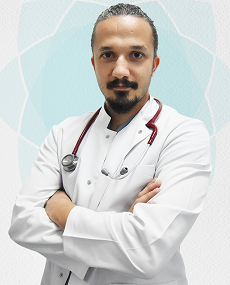
Dr. Suat Günsel University of Kyrenia Hospital Emergency Medicine Specialist Uğur Özkula made the following statement on the occasion of the first-ever 17 September World Patient Safety Day launched by World Health Organization:
The first principal learned by every member of the medical faculty and which every healthcare worker must also learn; “ Imum Primum non nocere ”,“ First, do no harm! ”. While we are putting effort for human health, our biggest concern is to not harm a patient. However, no matter how much you adopt this principle, unfortunately there is always the possibility of harming a patient during medical practice. Although these losses are considered to be the “natural” outcomes of “modern medicine” practices, over the years, with the spread of health service provision, it has become an area where the efforts for determining the cause and effect relation are intensified in the last two decades. This situation is similar in developed countries of the world as in our country.
Determination of medical errors is so important that it cannot be simplified in the form of punishing the individual who makes a mistake. Nobody, not only health care workers, nobody makes mistakes on purpose. Therefore, explaining the error only by the human factor means both simplification and covering the real problem. Errors are almost always systemic problems and this is an opportunity to identify and correct failures of the system.
It is possible to elaborate many negative examples such as inaccurate medication practices, interference in clinical laboratory testing results, inaccurate medical intervention or evaluations, inaccurate surgical procedures and many more. Blaming healthcare providers for all these kind of mistakes means ignoring other problems such as; untrained or insufficient personnel, long working hours, lack of infrastructure and lack of supervision mechanisms. The important thing is to prevent an error and, as you can see, the final practitioner is only a part of this chain.
It is essential that both the ministry of health and each hospital determine their own protocols in order to establish patient safety. It is also an essential part of successful health service delivery. Raising awareness on this issue for the development of patient safety culture both among health workers and in the community is the first step of this process and it is a suitable ground for informing both the community and health workers with various activities on special days like this.
Patient safety should be everyone’s job. Each individual’s access to high-quality health care is possible through prejudice-free communication produced between all segments of society, such as managers, professional organizations, health workers and patients and by the support of the policies produced by the governmental state. Wishing everyone healthy days…”